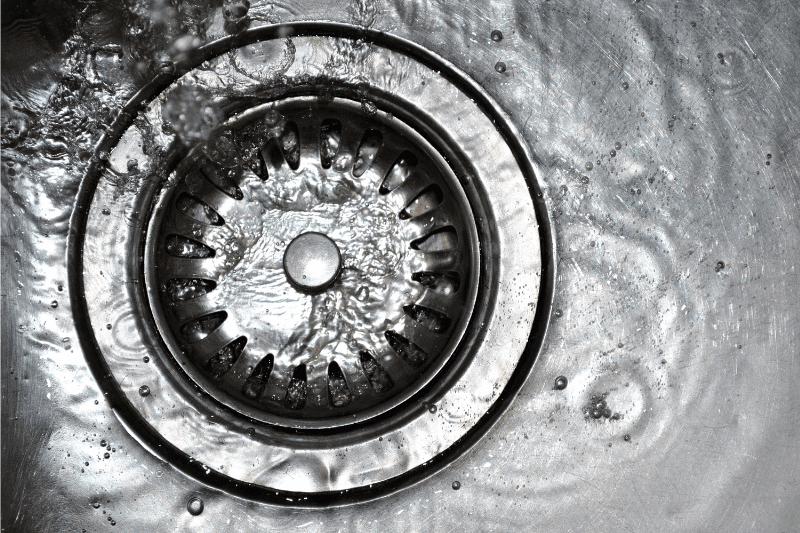Every homeowner agrees: Clogged or slow-moving drains are a nuisance.
While you might not be able to prevent every clog, you can certainly take some steps to reduce your chances of getting one.
In this article, we’ll share how to prevent clogs in 3 areas of your home:
- Kitchen sink
- Bathroom sink & shower
- Toilet
Already have a clogged drain? We can clear your drain in no-time.
How to Prevent Clogs in Your Kitchen Sink
The best way to prevent clogs in your kitchen sink is to avoid putting food down the drain as much as possible.
While your garbage disposal can grind food to go down the pipe easier, the more food you wash down the drain, the more grime buildup you’ll get. Eventually, all that buildup could easily cause a clog.
In addition to limiting how much food you put down the drain, there are certain foods you should never put down the drain.
Foods you should never put down your drain include:
- Cooking grease
- Coffee grounds
- Egg shells
- Stringy vegetables (like celery and carrots)
- Food fat
- Fruit pits
- Bones
- Pasta and rice
These foods can block (or stick to the inner lining of) your pipes, which greatly increases your risk of getting a clog in your kitchen sink.
How to Prevent Clogs in Your Bathroom Sink & Shower Drain
Let’s look at how to prevent clogs in each drain of your bathroom.
Bathroom Sink Drain
The biggest culprits of a clogged bathroom sink are hair (especially long hair) and excess toothpaste.
To prevent clogs in your sink drain, avoid brushing your hair over the sink, and try to limit how much toothpaste goes down the drain. If you accidentally spill toothpaste in the sink, scoop it out and throw it in the trash rather than wash it down the drain.
Shower Drain
Soap residue and hair often clog shower and bathtub drains.
The best way to avoid a clogged shower is to use a mesh screen or drain-grate in your tub. These protective devices will catch that gunk before it goes down your drain, where it can clump together and form a clog. You’ll need to periodically clean the grate so that water doesn’t build up in your tub.
Have a Slow-Moving Drain in Your Bathroom? Try These DIY Fixes Before You Call a Pro
- Step 1: Run warm water to dissolve water-soluble material.
- Step 2: Put a handful of baking soda into the drain and follow it with hot water.
- Step 3: Pour 1 cup of vinegar down the drain. Wait 30 minutes then run hot water for a few minutes.
If the clog persists after you’ve tried these tips, contact a professional to help you clear the clog. DO NOT use chemical clog-clearing products or attempt to use a snake to remove the clog as both of these methods can damage your pipes even more.
How to Prevent Toilet Clogs
The bottom (hehe) line? Nothing but human waste and toilet paper should go down the drain.
To prevent clogs, don’t ever flush anything else down the toilet. This includes objects like:
- Hair
- Dental floss
- Nail clippings
- Feminine hygiene products
- Q-tips
- Cotton balls
- Paper towels/tissues
- Pills
If you have a clog, you can use a plunger to see if that fixes the problem. Otherwise, contact a professional plumber and leave the dirty work to them!
Want Even Better Clog Prevention? Get a Plumbing Check-Up
We recommend getting an annual plumbing check-up to ensure that none of your pipes are at risk of clogging.
It’s much more convenient and less expensive to catch a clog before it forms, rather than deal with it after the fact.
During our standard plumbing system check, we make sure all of your fixtures and pipes are in good condition. If your drains show any risk of clogging, we can fix them before it turns into a problem.
For more information about what we cover during a plumbing check-up, visit our maintenance plan page.
Ready for Your Plumbing Check-Up?

